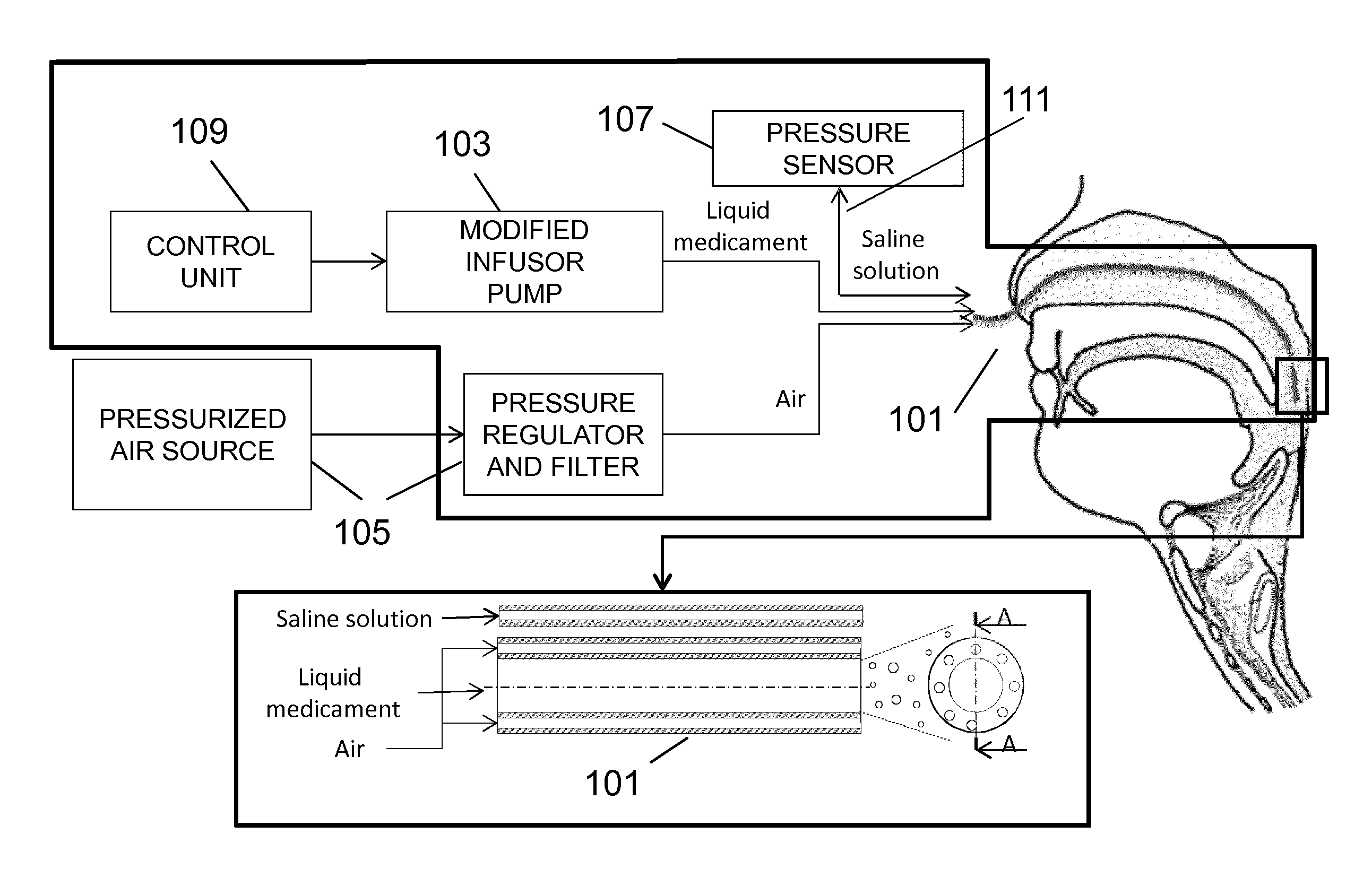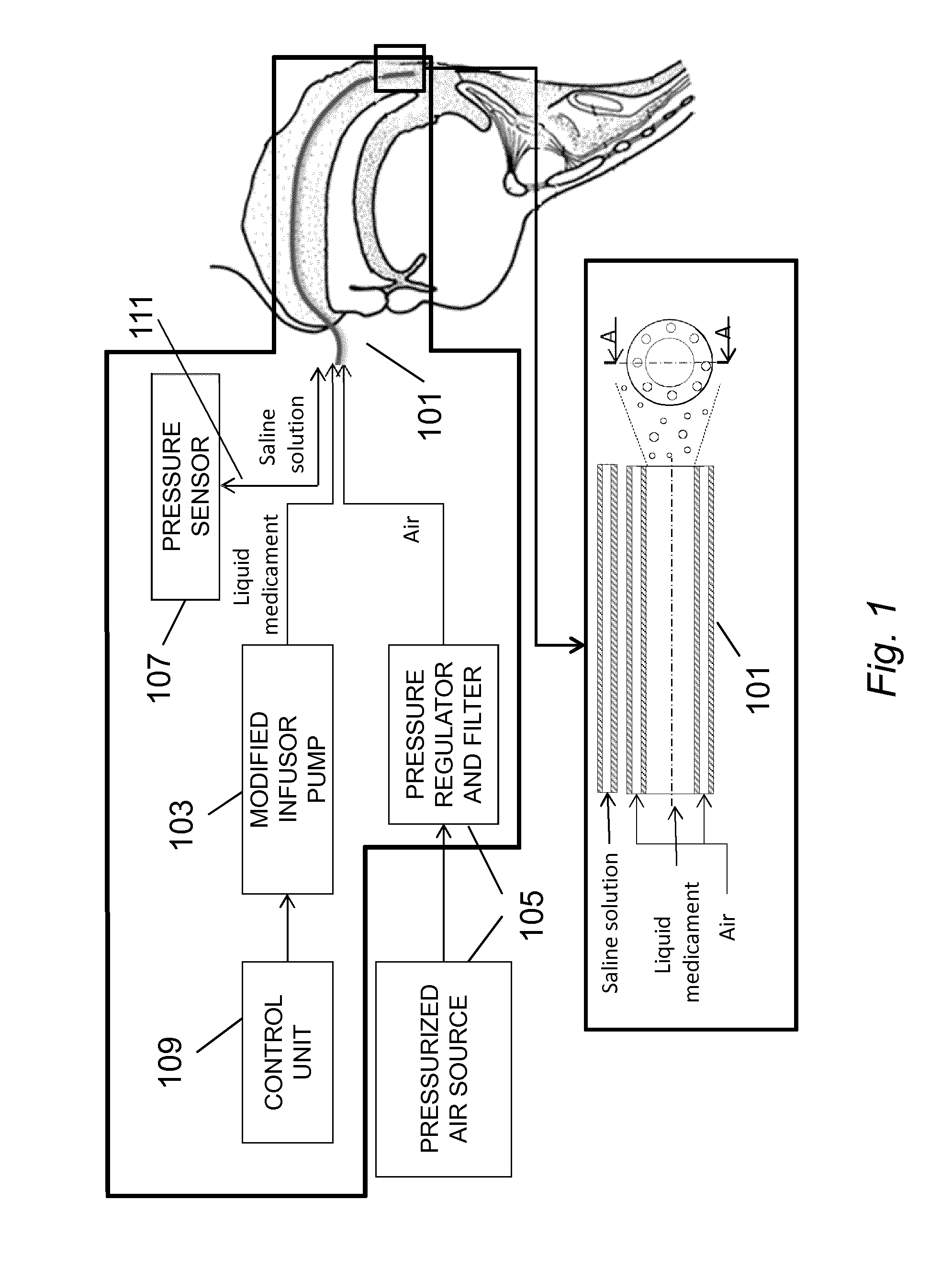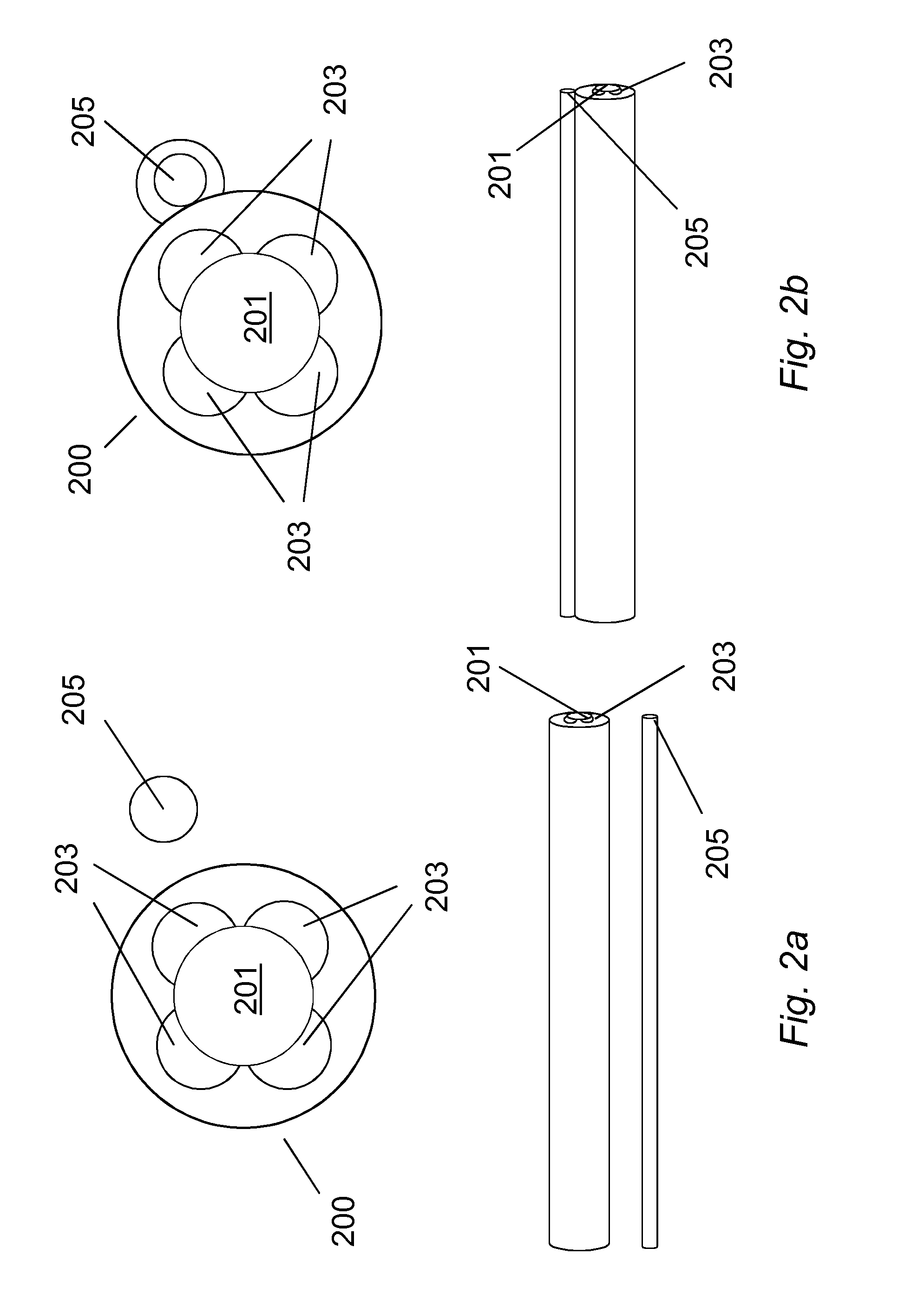Improved method and system for the administration of a pulmonary surfactant by atomization
a pulmonary surfactant and atomization technology, which is applied in the field of retropharyngeal instillation of medicaments, can solve the problems of difficult comparison amongst patients, difficulty in identifying the effectiveness of nebulization approaches, and particularly difficult with infants, and achieves low cost, efficient delivery of atomized particles, and gentle atomization process
- Summary
- Abstract
- Description
- Claims
- Application Information
AI Technical Summary
Benefits of technology
Problems solved by technology
Method used
Image
Examples
example 1
[0094]In vivo efficacy of atomized surfactant (in this example poractant alfa, as defined above) was evaluated in preterm newborn rabbits at the 27th day of gestation (term=31±1 days). The model chosen closely resembles the conditions of premature babies affected by RDS in that the lungs of these animals are not yet able to produce their own surfactant, but can warrant gas exchange so that they can expand in response to exogenous surfactant administration.
[0095]Treatments were intratracheally given at 2 ml / kg volume, corresponding to 160 mg / kg dose. Foetuses, paralyzed with pancuronium bromide (0.02 mg i.p.), were then placed in the plethysmograph system at 37° C. and ventilated with pure oxygen at constant pressure (frequency 40 / min, inspiration / expiration ratio 60 / 40). No positive end-expiratory pressure (PEEP) was applied. An “opening” pressure of 35 cmH2O was first applied for 1 min to overcome initial resistance due to capillarity in finer conducting airways. It...
example 2
Deposition Study
[0106]1. Groups
[0107]Old piglets, weighing between 0.8-2.0 kg, were used.
[0108]1.1 Insure Group (Control)
[0109]Under sedation with dexmedetomidine and ketamine and after topical anaesthesia of the larynx with lidocaine spray, the piglets were orally intubated Anaesthesia was supplemented by small doses of iv. propofol, as needed. Tube position was confirmed by bilateral auscultation of the lungs and careful assessment of the endotracheal tube depth. The piglets were laid on the side determined by the randomization protocol. Curosurf® was thoroughly mixed with 300 MBq of Tc-labelled nanocolloid and the animals received 200 mg / kg Curosurf® (80 mg / mL) instilled through a catheter advanced through the tube, ending exactly 5 mm beyond its tip. After Curosurf® instillation, the lungs were recruited with PS-ventilation (pressure-support, 4-8 cmH2O over PEEP) and PEEP 10 cmH2O for 1 min followed by PS med 4 cmH2O PEEP via the endotracheal tube for at least 30 min, at the end...
example 3
In Vivo Study in Pre-Term Lambs
[0135]The aim of this study was to compare the effect of atomisation of exogenous surfactant during spontaneous breathing whilst on CPAP with CPAP alone in a pre-term lamb model of neonatal respiratory disease.
[0136]1. Animals
[0137]Date-mated Border-Leicester ewes were studied at 130-134 d gestation. Ewes were pre-medicated with ketamine (250 mg) and xylazine (3 mg), anaesthetized with nitrous oxide, isoflurane and propofol, intubated and catheterized with arterial and venous catheters. Light anesthesia was maintained with nitrous oxide, a propofol infusion and the lowest possible isoflurane concentration (IO2 0.4-0.5. An arterial blood gas sample was taken and ventilator rate, tidal volume and FIO2 adjusted accordingly. The animal placed supine and prepared for Caesarean delivery.
[0138]2. Pulmonary Surfactant Preparation
[0139]Surfactant was labeled with Samarium Oxide (SmO3), using an ultrasonic mixer at a concentration of 0.33 mg SmO3 per 3 mL (1×via...
PUM
 Login to View More
Login to View More Abstract
Description
Claims
Application Information
 Login to View More
Login to View More - R&D
- Intellectual Property
- Life Sciences
- Materials
- Tech Scout
- Unparalleled Data Quality
- Higher Quality Content
- 60% Fewer Hallucinations
Browse by: Latest US Patents, China's latest patents, Technical Efficacy Thesaurus, Application Domain, Technology Topic, Popular Technical Reports.
© 2025 PatSnap. All rights reserved.Legal|Privacy policy|Modern Slavery Act Transparency Statement|Sitemap|About US| Contact US: help@patsnap.com



